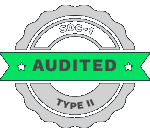Among the biggest threats faced by organizations are not just their competitors or the constantly changing market. It’s the organization’s own data.
But how can one’s own data be a threat? Well, data silos are usually tricky to access and are not updated. This results in redundancy, fragmented data, and even wrong information. These data silos can cause decreased productivity, poor collaboration, and unwanted costly mistakes.
According to one survey conducted by Gartner, bad/low quality data costs organizations around $12.9 million a year.
To put the real cost of siloed data in plain terms:
Your team would not know what type of data exists.
The data cannot be trusted even if it’s identified.
They cannot access the data or don’t have clarity on it.
Outdated data can lead to missed opportunities for businesses. The same goes for duplicate and incorrect entries. All this leads to poor data-driven decision making.
Table of Contents
Let’s take the example below.
Data silos happen naturally, keeping in mind factors such as organizational culture, technology, and processes. These restrict information sharing. The three most common causes for data silos within an organization:
Multiple apps & resources of data
Organizational structure
Company growth
The last cause might come as a shock, but that’s true. When a company starts growing rapidly and its associated processes and infrastructure fail to keep pace with growth, this creates a backlog of outdated data.
Databricks Lakehouse Architecture: One Platform, Many Possibilities
Data Lakehouse architecture is a unified data management platform that combines low-cost scalability with high-end data structure, performance, and reliability.
This enables organizations to store and evaluate all types of data (structured, semi-structured, and unstructured) all in one place.
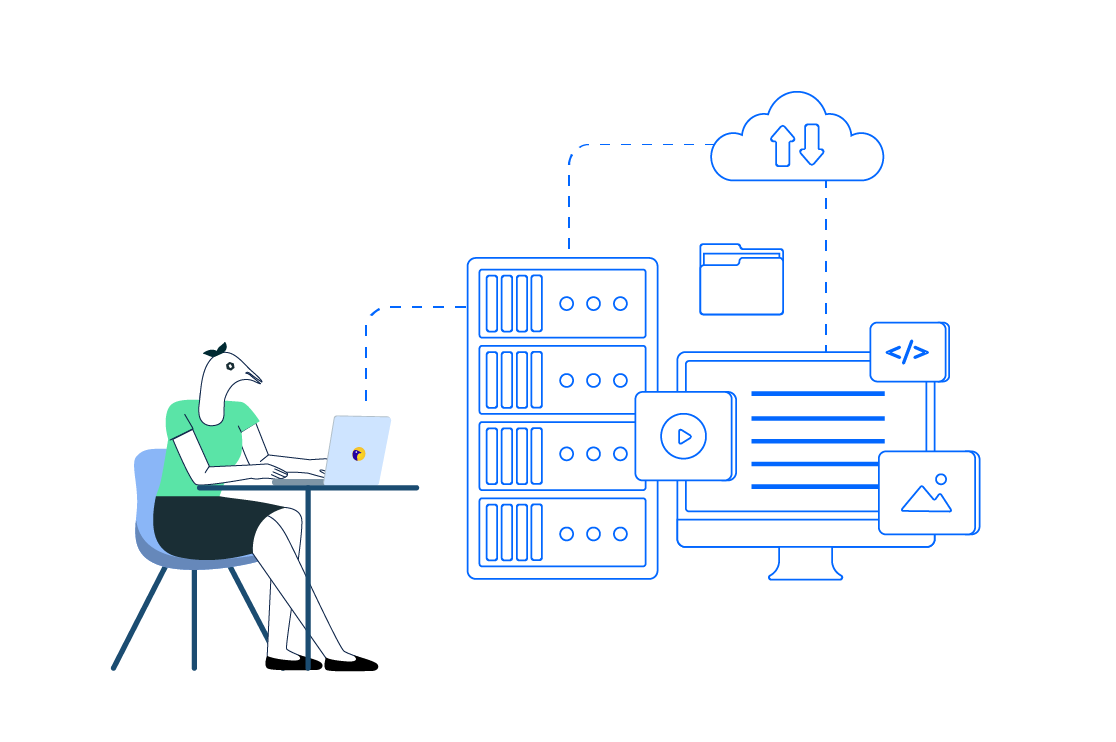
Built on open table formats like Apache Iceberg and Delta Lake, data lakehouse acts as a single source of information for a wide range of analytics. This leads to decreased complexity and a fall in operational costs through the elimination of separate systems.
Let’s take a quick look at the various key concepts.
Unified data platform: Combines data lakes’ flexibility with data warehouses‘ performance in one platform.
Reduce vendor lock-in: Uses open-source projects like Apache Spark and Delta Lake to ensure flexibility and avoid lock-in.
Data governance with Unity Catalog: Centralizes access policies, security, auditing, and lineage for trusted governance.
Simplified data ingestion: Auto Loader automates file ingestion, schema changes, and ETL pipelines.
Performance and reliability: Delta Lake ensures ACID transactions, schema enforcement, and query optimization.
AI and ML at scale: Integrates MLflow and managed services to streamline machine learning development.
Scalability and flexibility: Cloud-native design supports dynamic scaling, diverse data, and analytics use cases.
With a single, reliable source of data, the Databricks Lakehouse empowers different data personas to work together on the same platform.
Real-Time Databricks Lakehouse Insights For CXO Decision-Making
The Databricks Lakehouse platform empowers CXOs to leverage real-time insights for improved decision-making across various aspects of their business by unifying data, analytics, and AI on a single platform.
Here’s how Databricks Lakehouse facilitates this.
Organizations across industries are leveraging Data Lakehouse to gain real-time insights and enhance decision-making:
Financial services: Enables real-time fraud detection and risk analysis.
Manufacturing: Powers predictive maintenance and real-time equipment monitoring.
Retail and E-commerce: Enhances recommendation systems and optimizes inventory management.
Healthcare: Accelerates genomic analysis and improves patient data management.
By embracing the Databricks Lakehouse Platform, CXOs can unlock the full potential of their data, enabling faster, more informed decisions that drive innovation, improve efficiency, and deliver a competitive advantage.
Let’s check a couple of use cases related to Data Lakehouse.
Mastercard uses databricks to deploy AI responsibly and connect insights across teams, platforms and partners. The company automates customer support with a GenAI onboarding assistant, supplements domain-specific ai agents with human-in-the-loop feedback, unifies data governance, and accelerates iteration across the enterprise. This led the company to achieve 35% better insights to execute faster decision making.
Fox Sports employed databricks to make AI-powered searches feel like part of the game. The company developed Cleatus AI: a go-to sports assistant that chats in natural language with live scores, stats and commentary. ai-powered search led to a 2x higher query success rate for fans seeking fast, relevant results.
Arctic Wolf leveraged databricks to support AI-driven cybersecurity for seamless protection and unmatched resilience. Among other capabilities, ETL pipelines process billions of events daily with high-throughput, low-latency ingestion and analysis, and ML and behavioral analytics detect anomalies, threats and sophisticated attacks more effectively.
Integrating Legacy & Cloud Data Without Disruption
Integrating legacy and cloud data without disruption can be accomplished with the Databricks Lakehouse Platform through merging data in a single, open-format system, incorporating real-time data processing, and implementing Delta Lake for reliable transactions.
How it Works Without Disruption?
Gradual migration: Rather than incorporating a disruptive approach, organizations can migrate data incrementally from legacy systems to the Databricks Lakehouse.
ETL simplification: The Lakehouse streamlines the Extract, Transform, Load (ETL) processes by offering a single and unified platform for data management and transformation.
Direct access to trusted data: Users can access and query trusted data directly from the lakehouse, promoting collaboration, and decreasing requirement for complex data pipelines & separate systems.
Automated schema management: Features like automated schema enforcement and evolution ensure data integrity as data sources change, maintaining data quality over time.
ROI Gains from Unified Intelligence of Databricks Lakehouse
By adopting Databricks Lakehouse for unified intelligence, organizations can achieve significant ROI through a combination of cost savings, increased productivity, accelerated time-to-market, and the creation of new revenue streams.
A 2023 Nucleus Research study found that enterprises using the Data Lakehouse platform experienced an average ROI of 482% over three years, with a payback period of just over four months.
The ROI is generated by overcoming the challenges of fragmented, legacy data architectures by consolidating data lakes and warehouses into a single, unified platform.
Financial ROI from cost savings
Reduced infrastructure costs
Lower administrative costs
Optimized resource allocation
Operational ROI from increased efficiency
Accelerated time-to-value
Improved team productivity
Enhanced BI and ETL efficiency
Faster processing and reduced latency
Strategic ROI from business acceleration
Faster, data-driven decisions
Improved innovation with AI
New revenue opportunities
Conclusion
The shift from siloed data to unified intelligence isn’t just a technology upgrade; it’s a leadership move. Enterprises that continue relying on fragmented data risk higher costs, sluggish innovation, and decision paralysis. With the Databricks Lakehouse, organizations consolidate data lakes and warehouses into one governed, scalable platform, turning raw data into actionable insights.
For CXOs, the message is clear: Unify your data, empower your decisions, and outpace your competitors. For decision makers who are looking for a reliable provider of enterprise cloud data services, BluEnt offers experienced Databricks consulting services for all your data requirements.
Your CXO edge grows with every read. Stay with us for the next Databricks insight.
FAQs
What are data silos, and why are they harmful for enterprises?Data silos occur when data is isolated across departments or systems. They increase costs, reduce collaboration, and slow decision-making.
How does Databricks Lakehouse differ from traditional data lakes or warehouses?Unlike siloed lakes or warehouses, the Lakehouse combines storage, governance, and analytics in a single platform—offering flexibility and scale.
Can Databricks Lakehouse integrate with legacy on-premises systems?Yes. With Lakehouse Federation and connectors, enterprises can seamlessly integrate on-premises and cloud data without disruption.
How does the Lakehouse improve real-time decision-making for CXOs?By unifying structured and unstructured data, the Lakehouse enables real-time analytics, predictive modeling, and AI-driven insights for faster CXO decisions.
What ROI benefits can enterprises expect from adopting Databricks Lakehouse?Enterprises gain cost efficiency, better data governance, faster innovation cycles, and improved scalability—leading to higher long-term ROI.
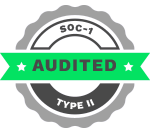










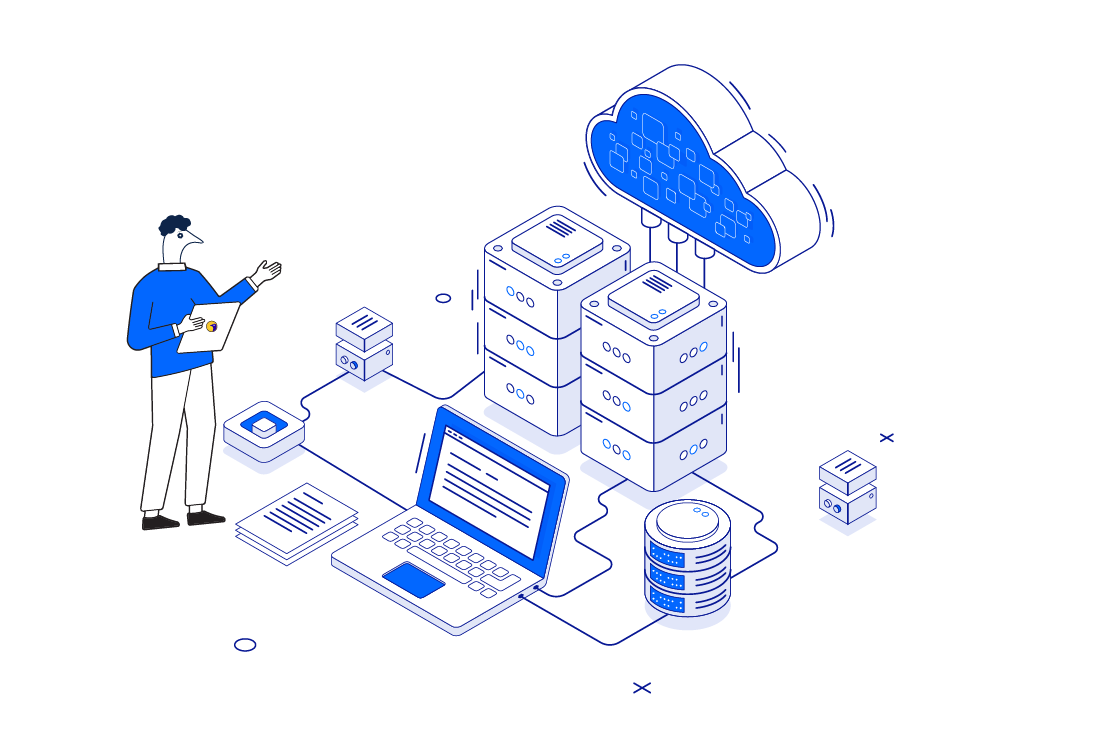
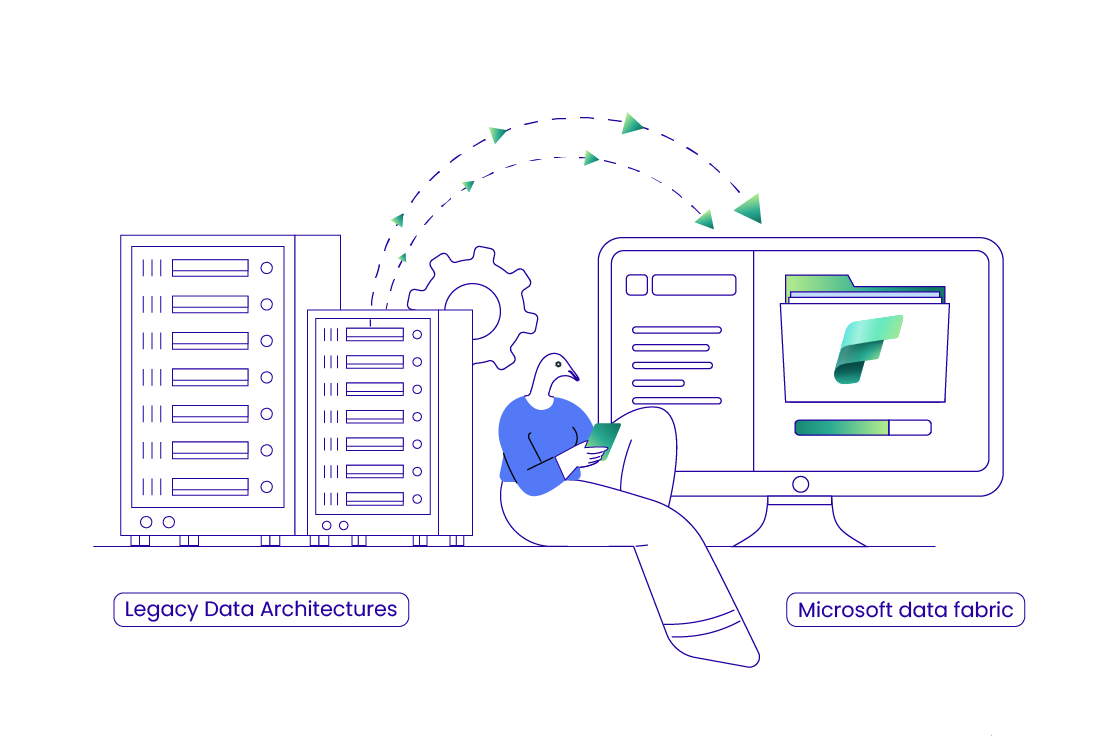 Migrating Legacy Data Architectures to Microsoft Data Fabric: Key Risks, Rewards, & ROI
Migrating Legacy Data Architectures to Microsoft Data Fabric: Key Risks, Rewards, & ROI 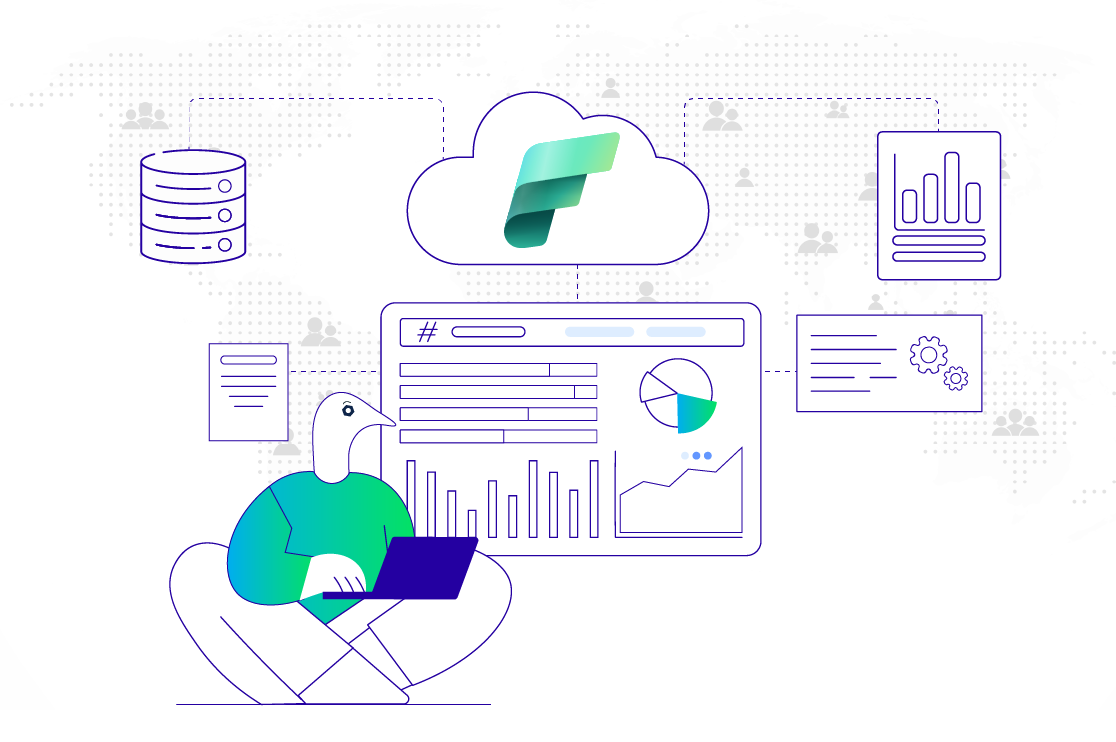 How Microsoft Data Fabric Integration Ensures Compliance, Security & Standardization for Enterprises
How Microsoft Data Fabric Integration Ensures Compliance, Security & Standardization for Enterprises 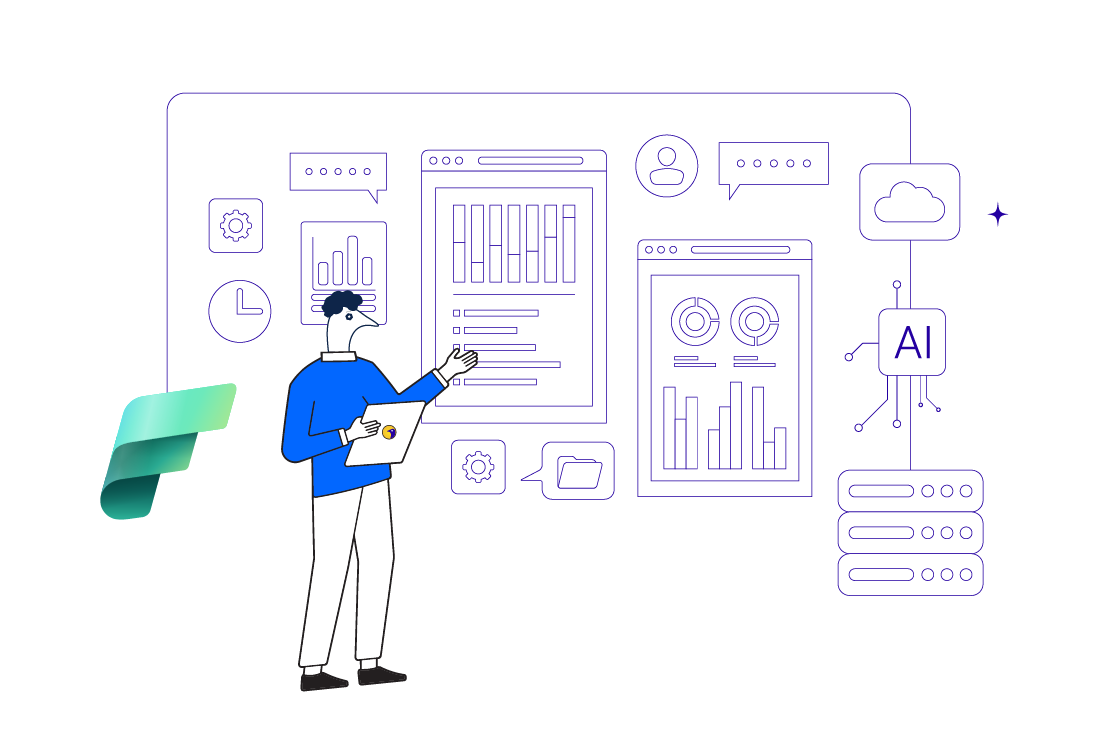 Real-Time Intelligence in Microsoft Fabric: Enabling CXOs With Faster Decisions
Real-Time Intelligence in Microsoft Fabric: Enabling CXOs With Faster Decisions 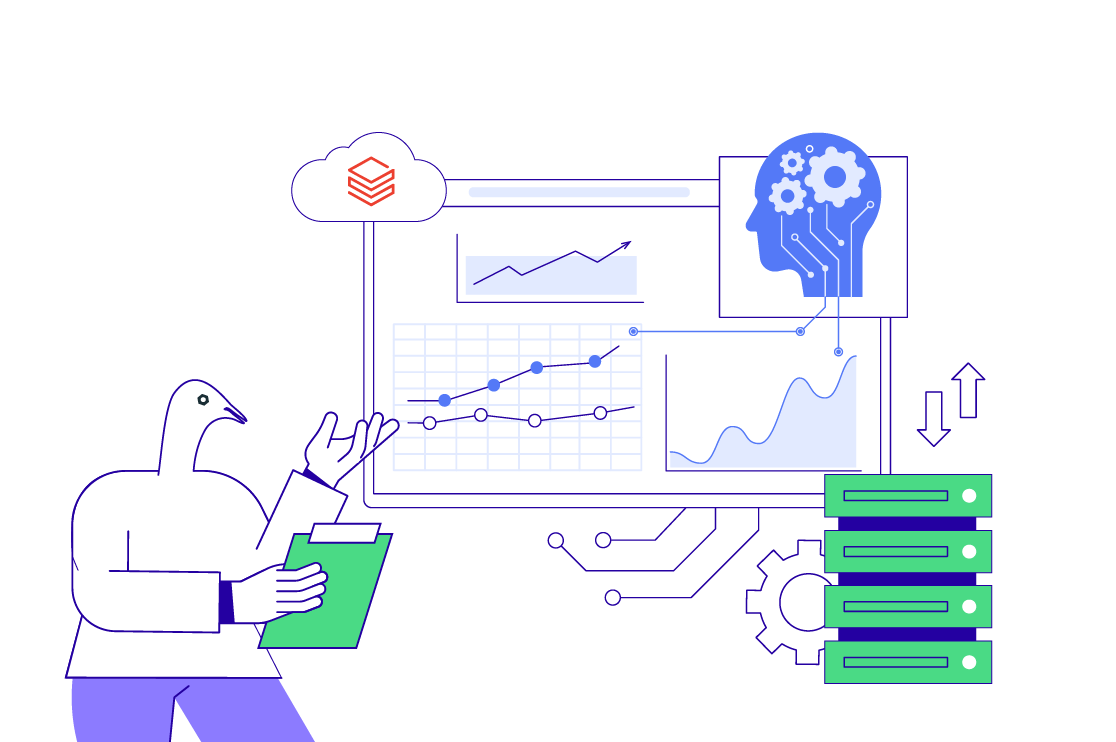 Scaling AI & Analytics on Databricks: CXO Use Cases that Deliver
Scaling AI & Analytics on Databricks: CXO Use Cases that Deliver 
